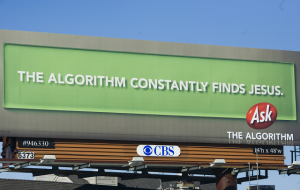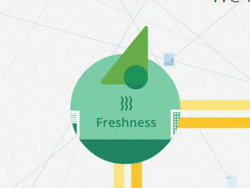The Google Algorithm as a Robotic Nose
January 16th, 2015 by ChristianAlgorithms, in the view of author Christopher Steiner, are poised to take over everything. Algorithms embedded in software are now everywhere: Netflix recommendations, credit scores, driving directions, stock trading, Google search, Facebook’s news feed, the TSA’s process to decide who gets searched, the Home Depot prices you are quoted online, and so on. Just a few weeks ago, Ashtan Soltani, the new Chief Technologist of the FTC, has said that “algorithmic transparency“ is his central priority for the US government agency that is tasked with administration of fairness and justice in trade. Commentators are worried that the rise of hidden algorithmic automation is leading to a problematic new “black box society.”
But given that we want to achieve these “transparent” algorithms, how would we do that? Manfred Broy, writing in the context of software engineering, has said that one of the frustrations of working with software is that it is “almost intangible.” Even if we suddenly obtained the source code for anything we wanted (which is unlikely) it usually not clear what code is doing. How can we begin to have a meaningful conversation about the consequences of “an algorithm” by achieving some broad, shared understanding of what it is and what it is doing?
(An Ask.com advertising campaign.)
The answer, even among experts, is that we use metaphor, cartoons, diagrams, and abstraction. As a small beginning to tackling this problem of representing the algorithm, this week I have a new journal article out in the open access journal Media-N, titled “Seeing the Sort.” In it, I try for a critical consideration of how we represent algorithms visually. From flowcharts to cartoons, I go through examples of “algorithm public relations,” meaning both how algorithms are revealed to the public and also what spin the visualizers are trying for.
The most fun of writing the piece was choosing the examples, which include The Algo-Rythmics (an effort to represent algorithms in dance), an algorithm represented as a 19th century grist mill, and this Google cartoon that represents its algorithm as a robotic nose that smells Web pages:
(The Google algorithm as a robotic nose that smells Web pages.)
Read the article:
Sandvig, Christian. (2015). Seeing the Sort: The Aesthetic and Industrial Defense of “The Algorithm.” Media-N. vol. 10, no. 1. http://median.newmediacaucus.org/art-infrastructures-information/seeing-the-sort-the-aesthetic-and-industrial-defense-of-the-algorithm/ (this was also cross-posted to the Social Media Collective.)



January 16th, 2015 at 12:17 pm
[…] (this was also cross-posted to multicast.) […]